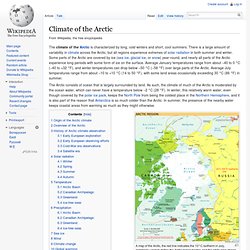

Connecticut's Extreme Weather Home. By Scott Cimini on February 27, 2012, 12:00am Use your ← → (arrow) keys to browse more stories.

Long before brick or wood houses became common, people had to be creative when building homes to protect them from the weather. Wealthy Europeans built fortified castles and Native Americans built teepees made from animal hides or bark. What about the people who lived in a very cold environment? Living in the frozen tundra made it very hard to find any building materials so they built their homes with the only abundant material they had around them which was snow. The people who lived in this frozen tundra were the Inuit, better known as the Eskimos. When people think about igloos, they picture a small, dome-shaped house built entirely out of blocks of ice.
Igloos come in many sizes. A well constructed igloo, coupled with a very small oil lamp and plain old body heat, can warm an igloo up 40 degrees above the outside temperature. Arctic Studies Center - Resources - Frequently Asked Questions. People in the Arctic had sleighs travel around… Antarctic Animals. Shelters. Clothes. Modern Antarctic Clothing. Accessories to Protect the Extremities - Head, Fingers and Toes (not forgetting ankles, wrists and neck) The extremities can get very cold very quickly.

Fingers and toes have a high surface area compared to their volume - this means they lose heat easily and generate and retain heat poorly. Particular attention should be paid to keeping them warm. The head can lose up to 20% of the body's heat, in cold weather, the quickest and simplest thing that can be done to warm up is to put on a hat, particularly convenient and useful when taking a rest break after some exertion. In extremis for the sake of survival, if the body is losing so much heat that it may be in danger, blood flow to those parts losing the most heat and that are "expendable" may be shut down to a trickle (this will not happen to your head however!). Hands In very cold conditions 2 or 3 pairs of gloves or mittens according to the conditions and activity. Ski-type gloves are good as they are warm and water resistant with it. Food. The Arctic People - Food / Hunting / Tools. Water. How to get a drink in the arctic. Climate of the Arctic. The climate of the Arctic is characterized by long, cold winters and short, cool summers.

There is a large amount of variability in climate across the Arctic, but all regions experience extremes of solar radiation in both summer and winter. Some parts of the Arctic are covered by ice (sea ice, glacial ice, or snow) year-round, and nearly all parts of the Arctic experience long periods with some form of ice on the surface. Average January temperatures range from about −40 to 0 °C (−40 to +32 °F), and winter temperatures can drop below −50 °C (−58 °F) over large parts of the Arctic. Average July temperatures range from about −10 to +10 °C (14 to 50 °F), with some land areas occasionally exceeding 30 °C (86 °F) in summer. The Arctic consists of ocean that is largely surrounded by land. Origin of the Arctic climate[edit] It is possible that this is the first time in the Earth's history that both poles have been simultaneously ice-bound. Overview of the Arctic[edit] Satellite era[edit]